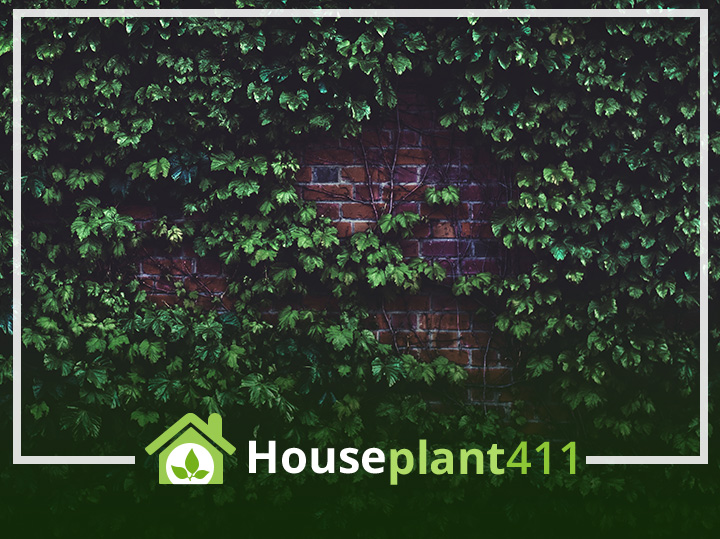Swedish Ivy is a fast-growing ground cover that can be used in many areas of the garden to enhance the appearance of the area. However, it is prone to several pests and diseases that can negatively impact its performance. This guide will help you identify common Swedish ivy plant pests and diseases, and how to treat them so your Swedish Ivy plant stays healthy and strong!!
Pests That Attack Swedish Ivy
Japanese Ivy Pest
Japanese Ivy is a pest that attacks the plant leaves and can be identified by its yellowish leaves and brown spots. The damage caused by Japanese Ivy will result in discoloration of the leaves, which may eventually kill them if left untreated.
The best way to avoid this problem is to keep your plants healthy through regular watering, fertilization, and pruning.
Spider Mites
Spider mites are little arachnids found on the undersides of leaves. They’re difficult to detect without a magnifying lens, but their webbing and red-orange color help them be identified. Spider mites do not attack or sting humans; instead, they suck sap from plants and destroy them by sucking out all their nutrients.
If you suspect that your Ivy has spider mites, here are some things to look for:
- Small dots (about 1mm) on the upper leaf surface or in clusters along veins on the underside of leaves
- Fine webbing over plant parts such as buds, flowers, and stems (this is usually only visible under magnification).
Broad Mite
Broad mites are a type of mite. They can be found on Ivy and other plants but are not harmful to humans. Broad mites are not insects, though they look similar in appearance to some types of spiders.
Broad mite infestations may cause leaves to turn yellow or brown and fall off the plant prematurely. If you notice signs like these on your Swedish Ivy, it’s time to act quickly before the problem gets worse!
Common Diseases of Swedish Ivy
Pear Blight
Pear Blight is a fungal disease that affects pears and apple trees. Pear Blight is caused by the fungus Sphaerotheca pannosa, which causes leaves on your plant to turn yellow, then brown. If you notice any of these symptoms on your Swedish ivy plants or other types of ivy plants, you may have a case of Pear Blight in your garden!
To control this disease: prune out any infected leaves and branches immediately; keep humidity low by watering less frequently; avoid overhead watering (if possible); remove diseased parts from the ground as soon as they are noticed, so they don’t spread more spores around your yard – this will help prevent future infections by keeping them away from healthy parts of the plant!
Ivy Leaf Scorch
Ivy Leaf Scorch is a disease caused by a fungus. Symptoms of Ivy Leaf Scorch include:
- Leaves that turn yellow, then brown, and finally fall off
- Small black spots on leaves and stems (which may be fuzzy)
If you have the symptoms of ivy leaf scorch, you can prevent the disease by doing one or more of the following:
- Avoid watering with cold water from late fall through spring; use warm water instead.
- Avoid overhead watering; try soaking the ground around your plant instead.
- Plants in well-drained soil with lots of organic matter, such as compost, are added.
Powdery Mildew
Powdery mildew is a fungal disease that attacks many different plants. It can be identified by the white, powdery substance that forms on leaves and stems.
Good garden hygiene is the most effective strategy to prevent this illness. Water your plants regularly, but not excessively, as this causes the plant’s roots to decay and become prone to disease. You should also avoid over-fertilizing your Ivy with nitrogen-rich fertilizers since this can result in excessive foliage growth, which increases the possibility of infection by powdery mildew spores (mildew has no preference for one type of foliage over another).
If you find yourself dealing with an outbreak of this fungus after all your precautions have failed and it appears that nothing else will save your precious Swedish Ivy from certain doom–or at least an unsightly appearance–you’ll want to know how best to treat these symptoms before they get out of hand!
Conclusion
Ivy plants are easy to grow but can also be susceptible to pests and diseases. Japanese ivy plants are especially prone to spider mites and pear blight, while broad mite infestation is common in areas with hot summers. If you notice signs of these pests or diseases on your ivy plant, you can take steps to prevent them from spreading throughout your garden!

